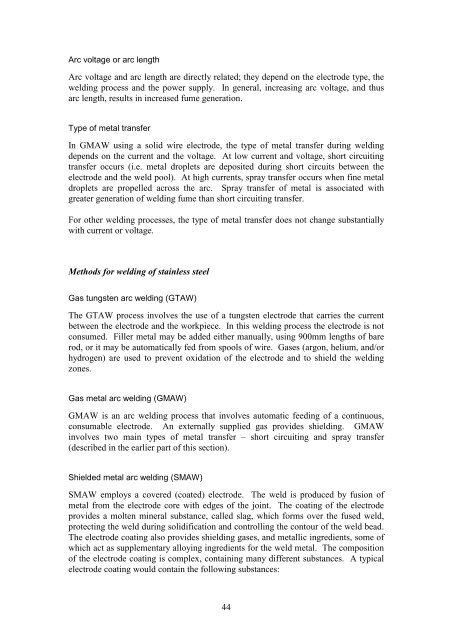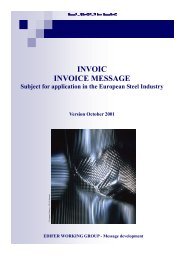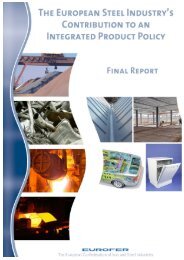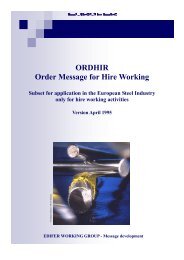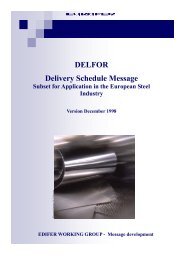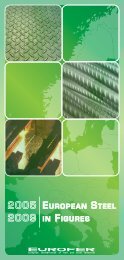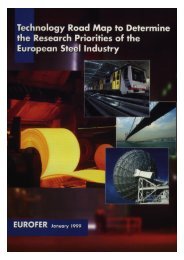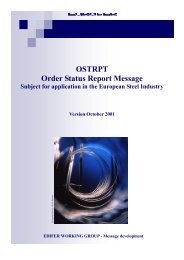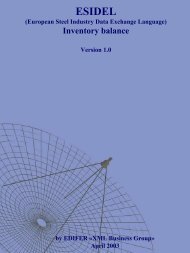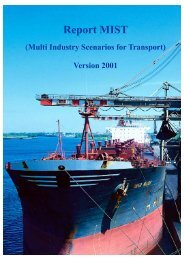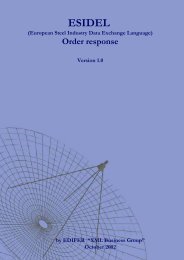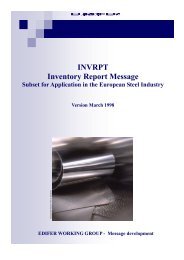manufacture, processing and use of stainless steel - International ...
manufacture, processing and use of stainless steel - International ...
manufacture, processing and use of stainless steel - International ...
You also want an ePaper? Increase the reach of your titles
YUMPU automatically turns print PDFs into web optimized ePapers that Google loves.
Arc voltage or arc length<br />
Arc voltage <strong>and</strong> arc length are directly related; they depend on the electrode type, the<br />
welding process <strong>and</strong> the power supply. In general, increasing arc voltage, <strong>and</strong> thus<br />
arc length, results in increased fume generation.<br />
Type <strong>of</strong> metal transfer<br />
In GMAW using a solid wire electrode, the type <strong>of</strong> metal transfer during welding<br />
depends on the current <strong>and</strong> the voltage. At low current <strong>and</strong> voltage, short circuiting<br />
transfer occurs (i.e. metal droplets are deposited during short circuits between the<br />
electrode <strong>and</strong> the weld pool). At high currents, spray transfer occurs when fine metal<br />
droplets are propelled across the arc. Spray transfer <strong>of</strong> metal is associated with<br />
greater generation <strong>of</strong> welding fume than short circuiting transfer.<br />
For other welding processes, the type <strong>of</strong> metal transfer does not change substantially<br />
with current or voltage.<br />
Methods for welding <strong>of</strong> <strong>stainless</strong> <strong>steel</strong><br />
Gas tungsten arc welding (GTAW)<br />
The GTAW process involves the <strong>use</strong> <strong>of</strong> a tungsten electrode that carries the current<br />
between the electrode <strong>and</strong> the workpiece. In this welding process the electrode is not<br />
consumed. Filler metal may be added either manually, using 900mm lengths <strong>of</strong> bare<br />
rod, or it may be automatically fed from spools <strong>of</strong> wire. Gases (argon, helium, <strong>and</strong>/or<br />
hydrogen) are <strong>use</strong>d to prevent oxidation <strong>of</strong> the electrode <strong>and</strong> to shield the welding<br />
zones.<br />
Gas metal arc welding (GMAW)<br />
GMAW is an arc welding process that involves automatic feeding <strong>of</strong> a continuous,<br />
consumable electrode. An externally supplied gas provides shielding. GMAW<br />
involves two main types <strong>of</strong> metal transfer – short circuiting <strong>and</strong> spray transfer<br />
(described in the earlier part <strong>of</strong> this section).<br />
Shielded metal arc welding (SMAW)<br />
SMAW employs a covered (coated) electrode. The weld is produced by fusion <strong>of</strong><br />
metal from the electrode core with edges <strong>of</strong> the joint. The coating <strong>of</strong> the electrode<br />
provides a molten mineral substance, called slag, which forms over the f<strong>use</strong>d weld,<br />
protecting the weld during solidification <strong>and</strong> controlling the contour <strong>of</strong> the weld bead.<br />
The electrode coating also provides shielding gases, <strong>and</strong> metallic ingredients, some <strong>of</strong><br />
which act as supplementary alloying ingredients for the weld metal. The composition<br />
<strong>of</strong> the electrode coating is complex, containing many different substances. A typical<br />
electrode coating would contain the following substances:<br />
44


